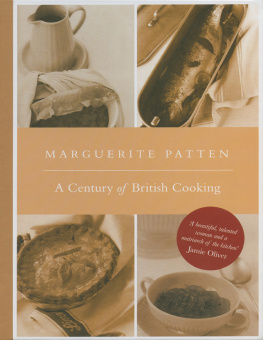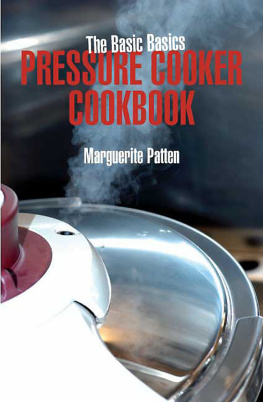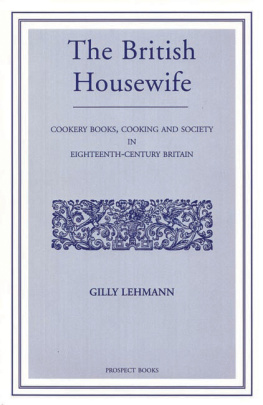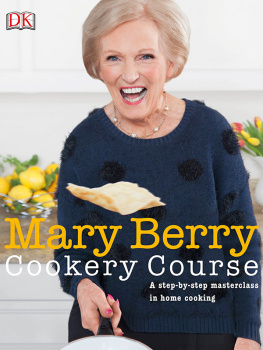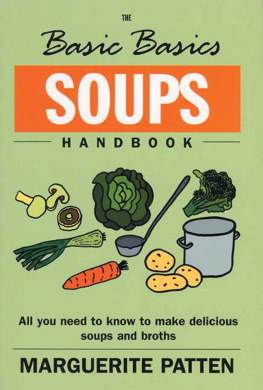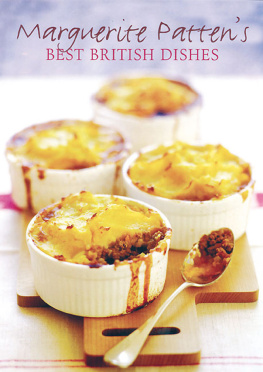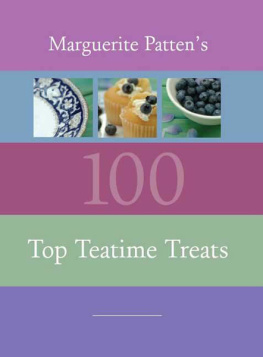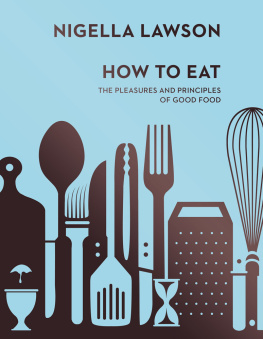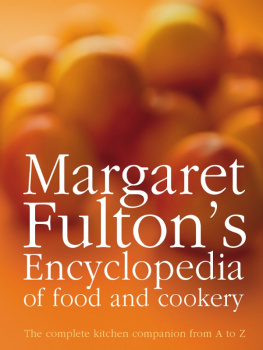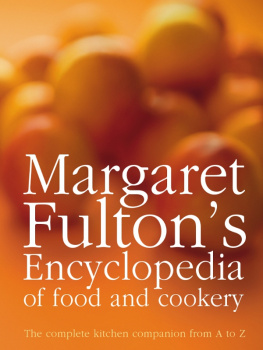This new edition published in 2015 by Grub Street
4 Rainham Close
London
SW11 6SS
Previous edition reprinted 2004, 2006, 2007, 2011
Copyright this edition Grub Street 2001, 2015
Text copyright Marguerite Patten 1999, 2001, 2015
The moral right of the author has been asserted.
British Library Cataloguing in Publication Data
Patten, Marguerite
Marguerite Pattens century of British cooking
1. Cookery, British
I. Title II. Century of British cooking
641.5941
ISBN: 978-1-910690-89-5
All rights reserved. No part of this publication may be reproduced,
stored in a retrieval system, or transmitted in any form or by any means,
electronic, mechanical, photocopying, recording or otherwise,
without the prior permission of the publishers.
Photography on cover and food shots by Michelle Garrett
The publishers wish to thank Wedgwood and Waterford Crystal
for the loan of china and glassware for photography.
Printed and bound in India
contents
1900 to 2000
kitchen maids, cooks and servants
1900 to 1909
from champagne to rationing
1910 to 1919
flappers and flapjacks to dumplings
1920 to 1929
hard times and soup kitchens
1930 to 1939
poor mans goose, monday jug
1940 to 1949
vol-au-vents and hostess trolleys
1950 to 1959
the prawn cocktail, black forest gteau and fondue set
1960 to 1969
curries and nut roast
1970 to 1979
pasta, pasta, pasta
1980 to 1989
the worlds larder
1990 to 2000
For many years I have been fascinated by the way food has changed in Britain and the fact that a large proportion of our population are happy to try the new ingredients that appear on sale in specialist shops and supermarkets. Often I have felt that the supermarkets of 1999 could be termed Aladdins Caves, for they are full of treasures in the form of new and exciting ingredients as well as more familiar commodities.
In the past we had the reputation of being conservative in our choice of dishes and unwilling to alter our familiar routines. Undoubtedly that may have been true in the earlier part of this century but over the last decades that reputation has become completely out of date.
Think of the selection of restaurants you will find in the towns and cities of Britain. An appreciable number specialise in menus from different parts of the world and the public patronise them with great enthusiasm. Having tasted these previously unknown dishes in restaurants, keen cooks then become eager to acquire suitable recipes and make them in their own kitchens. Chefs and cooks from various countries and cultures have written authoritative books about the cuisines of their homelands and demonstrated their skills on television, so it is relatively easy to learn about foods and dishes from abroad. The popularity of foreign travel has enabled many of us to taste interesting new ingredients and cooked dishes in their own surroundings.
With the excitement of the year 2000 I felt it important to look back over the 20th century, study the events that have occurred throughout the years, and the effect they have had on our methods of selecting and cooking foods of all kinds. This is why each decade has a brief preface to sum up important changes in British life. It was difficult to make the final choice of dishes, there were so many that have made their appearance throughout the century. The recipes I have selected are those that hit the culinary headlines at a particular period or are outstandingly good. Some dishes appeared suddenly and endured, others seem to have faded away. This is a pity for the best of them, like old friends, are worthy of our esteem. I hope I have given you a reminder that it is worthwhile making them once again.
We are fortunate in that our home-produced ingredients are of excellent quality, that is why many classic British dishes, made with these foods, remain favourites. The recipes given under the early decades prove this. There is no reason to forget them today, but rather to combine our own traditional fare with new ideas, that come to us from far-away places and so produce imaginative and superb meals.
I hope readers will take as much pleasure in using this book as I have in writing it. Good food and enjoyable meals play an important part in keeping us healthy.
At the end of the 19th century I have a feeling that, in many households, there could have been complaints that, while the cooking may have been good, the family dined on the same dishes week after week. In fact many people ate somewhat monotonous fare. This may have been because there was far less choice of ingredients in 1899. Surely few people should make a complaint of monotony at the end of 1999!
I would like to express my thanks to Anne Dolamore of Grub Street Publishing, who shares my enthusiasm for this project and has published the book. To Carole Fox who so carefully typed and checked the manuscript. To my grandson, Charles Henderson, who spent time researching events and cookery books of the First World War. To the Imperial War Museum who placed material concerning both the First and Second World Wars at my disposal.
I would like to record special thanks to my daughter Judith, granddaughter Joanna, son-in-law Michael, and indeed all my family, who have been so encouraging about my work.
Marguerite Patten
The Ingredients
Spoon measures mean a level spoonful of the ingredient. In a few recipes the word level is added. This stresses that, in the particular recipe, extra care must be taken not to exceed the measure. The spoons used are the 5ml spoon for a teaspoon and the 15ml spoon for a tablespoon.
Weights and measures are given in metric followed by imperial. These give the accurate measure as compared to the imperial. Some metric weights may seem difficult to achieve, e.g. 115g is 4 oz. Many domestic scales are not as accurate as this, so all you need to do is to weigh out a generous 100 g.
In cases where you would measure out liquid in a measuring jug at home 150 ml is shown as pint and 300 ml as pint.
Where you would be purchasing a container of food, such as yoghurt, 150 ml is shown as 5 fl oz and 300 ml as 10 fl oz.
Nowadays canned foods are marked with metric measures only, so no imperial equivalent is given.
Oven Settings
Temperatures as shown in C and F with gas equivalent. Ovens vary slightly, so follow the instructions with the knowledge of your own cooker in mind.
All recipes have been tested in both gas and electric cookers.
Fan ovens and fan assisted ovens are now very popular. I have given the setting for these as 10C lower than an ordinary electric oven. Check carefully with your manufacturers manual and the knowledge of your cooker. In some cases you may find it necessary to lower the setting by 20C not 10C.
Cooking Times
These have been tested very carefully but check the food a few minutes early in case your oven is a little hotter than the average.
I have called this period the Victorian Era, for although Queen Victoria died in 1901, after reigning for 64 years, her influence on the way people lived endured for some time after her death. Her son, Edward VII, was a very different character and the way things altered under his rule is covered at the beginning of the next decade.
The war between the British and the Boers, which began in 1899, was causing great anxiety at home, for there was bitter fighting in South Africa and the British forces seemed overwhelmed at first. On February 28th 1900 there came better news, Ladysmith in Natal, which had been under siege for 118 days, was relieved by General Bullen and his forces. This victory was followed a little later by the relief of both Bloemfontein and Mafeking. The war, which caused many deaths and casualties on both sides, finally ended in 1902.

